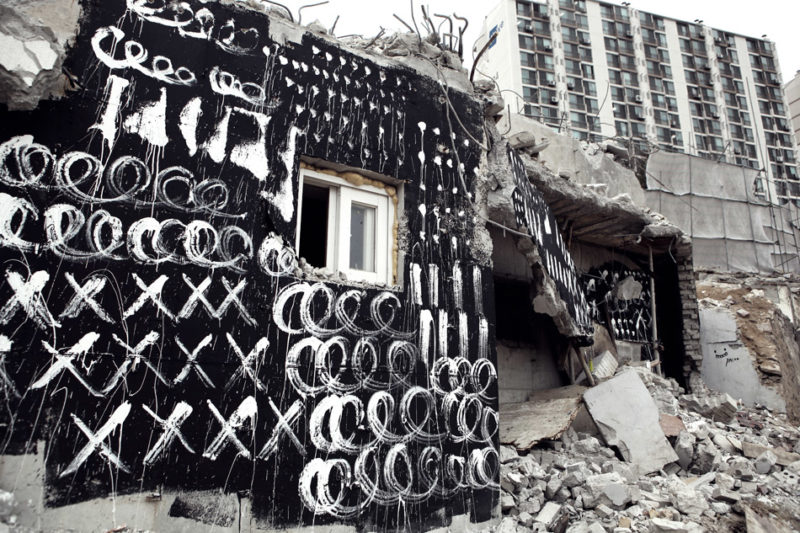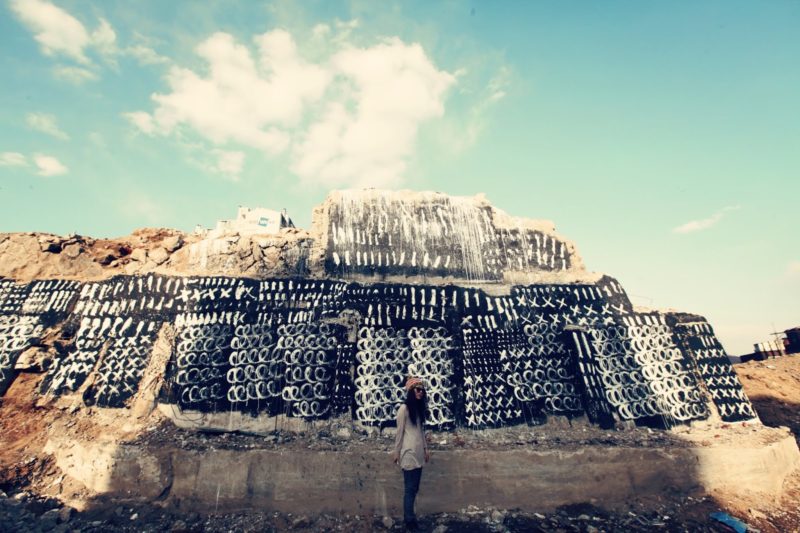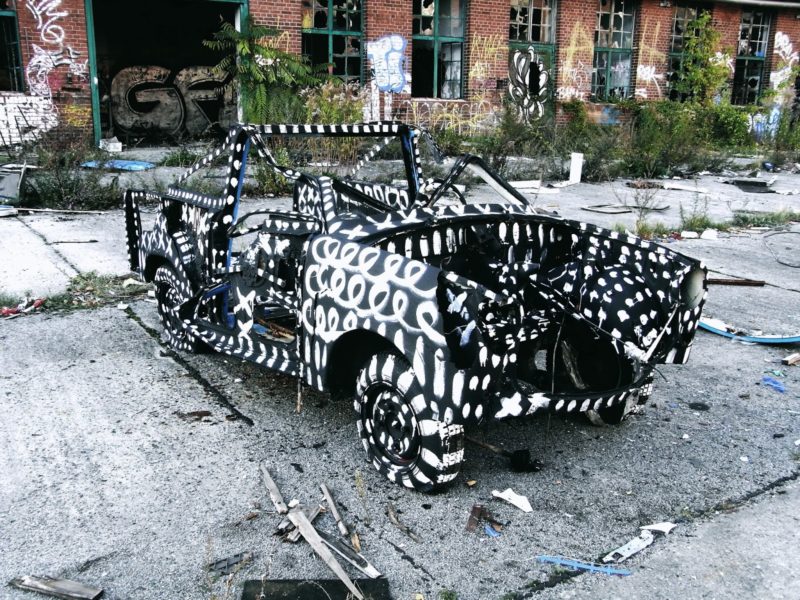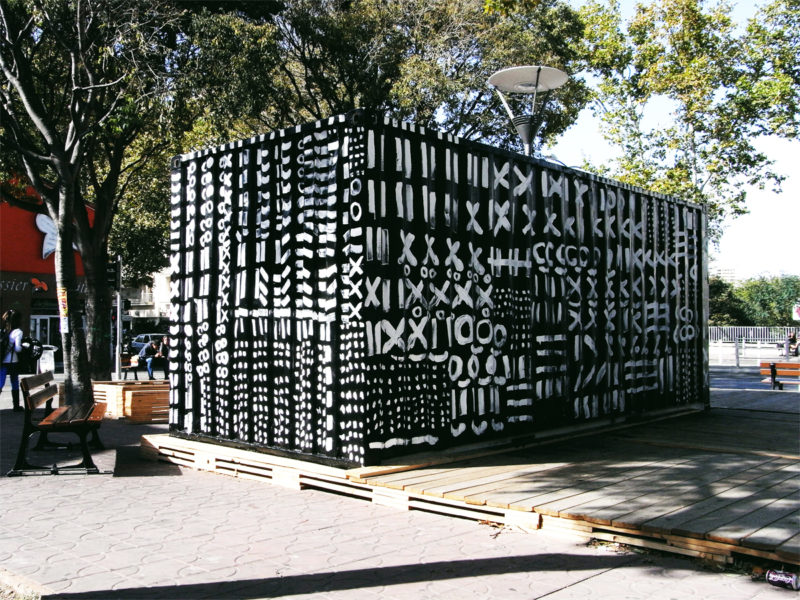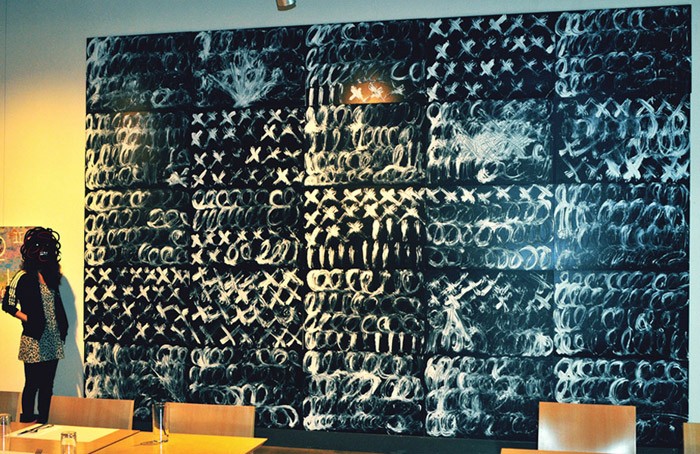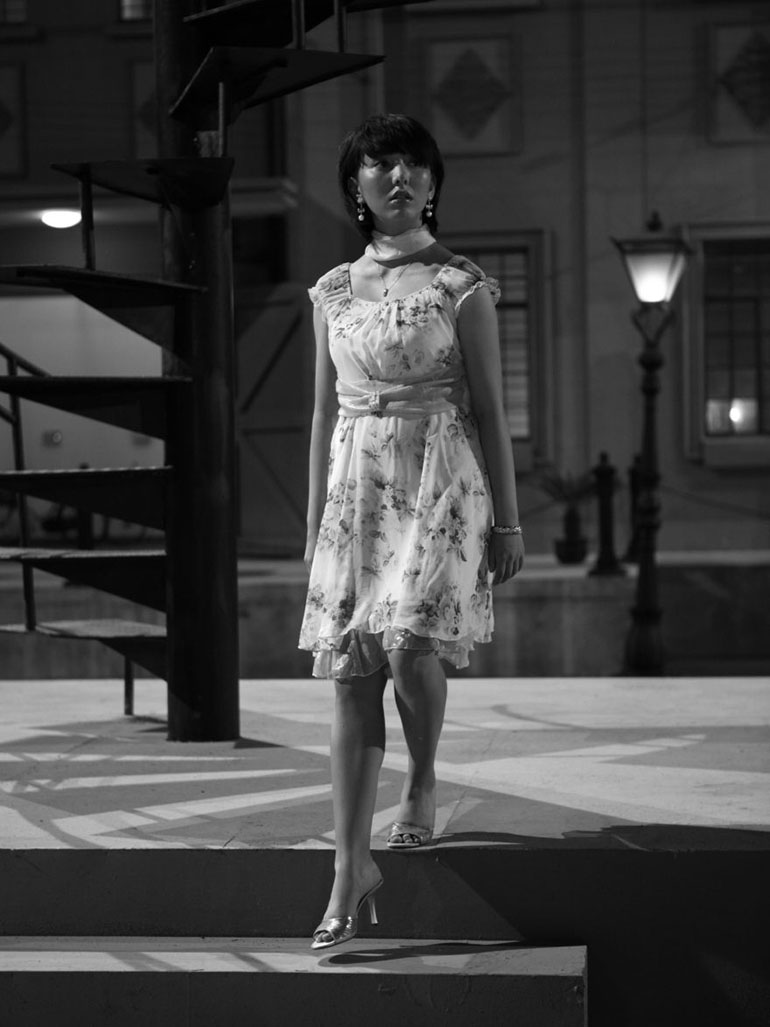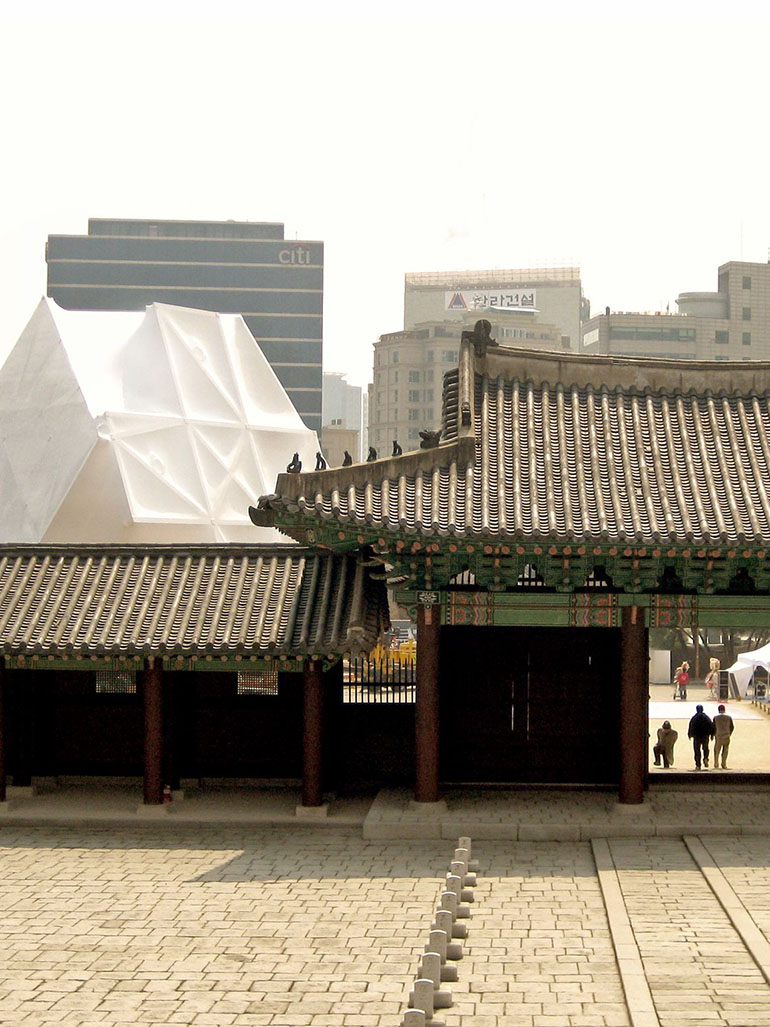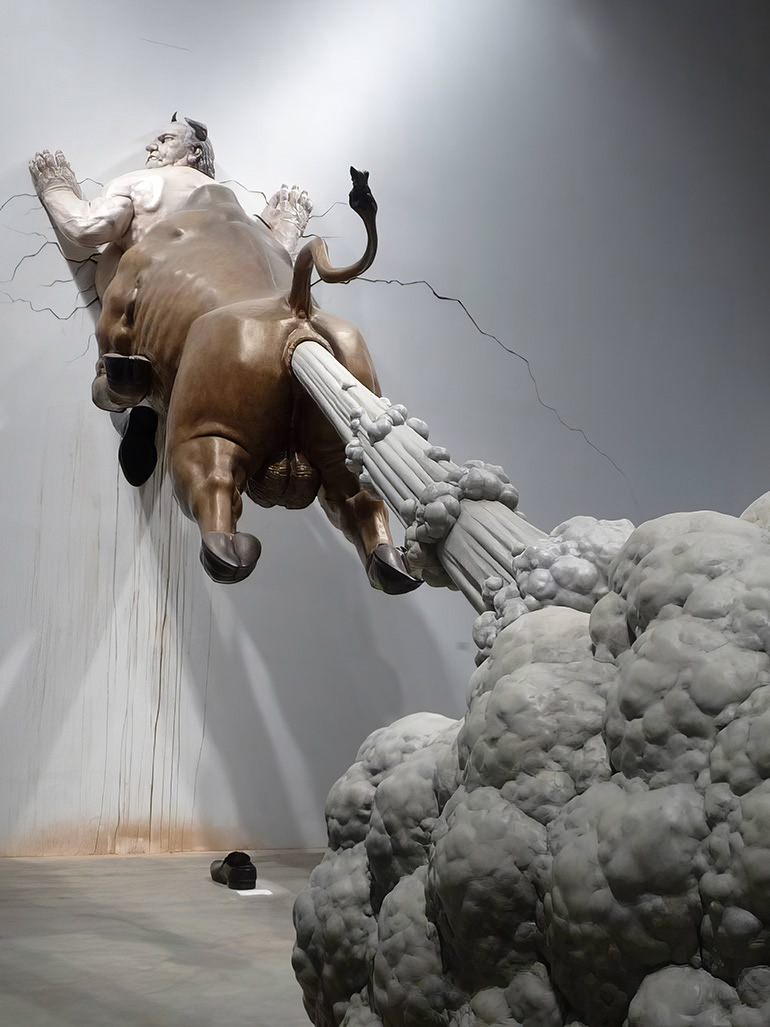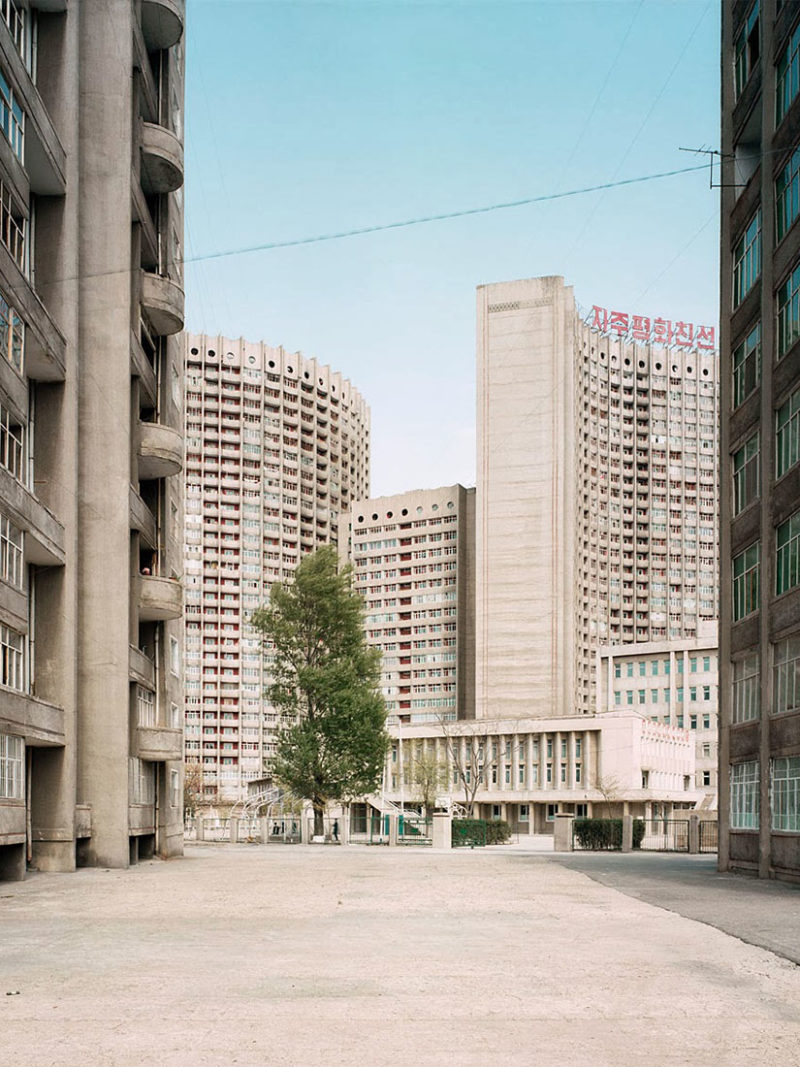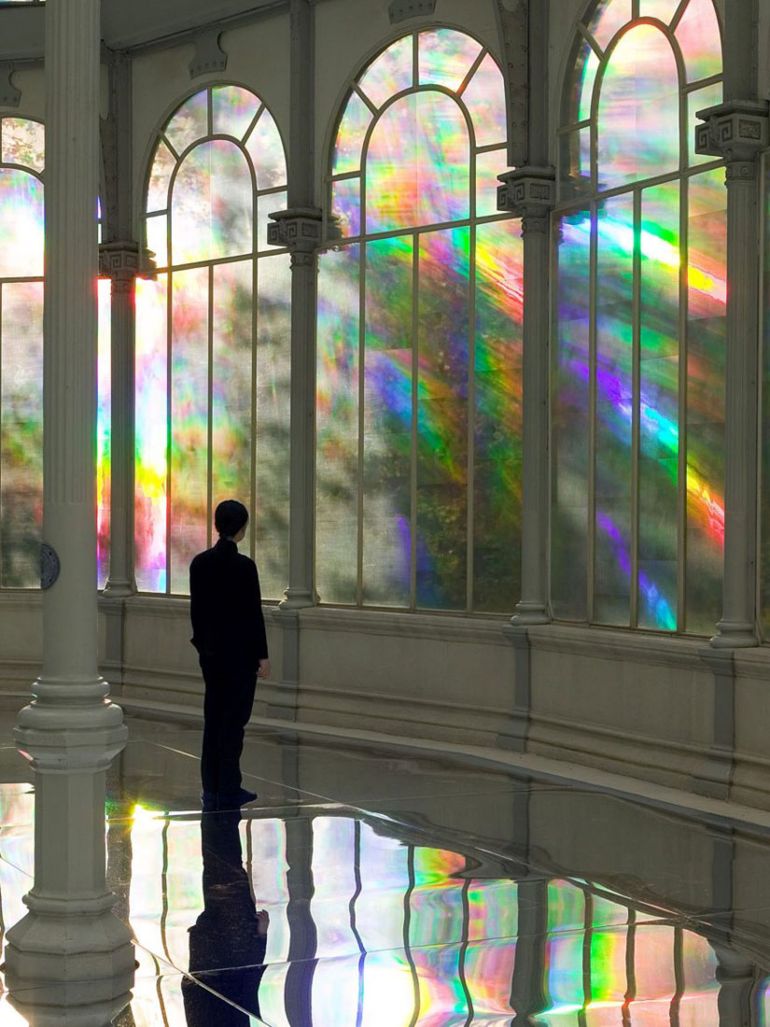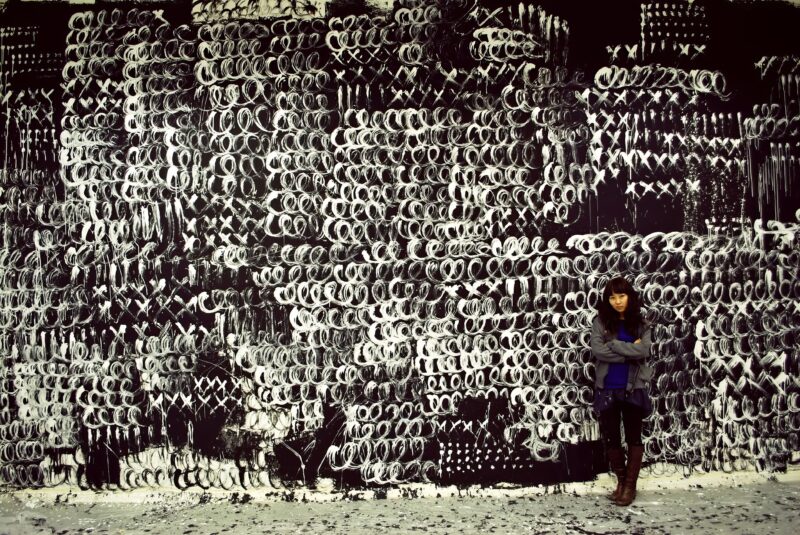
Who is Jazoo Yang?
Jazoo Yang is a South Korean artist who lives and works in Beijing and Seoul. She uses her paintings and installations to document others’ solitude, often in interesting ways. Her paintings, which she creates by using brushes or knives, are usually not finished so that the surface becomes the infinite space for her.
Yang has exhibited in numerous galleries in Seoul, at the Sang-sang International Art Museum, Beijing and had a solo exhibition at the Kunstraum Bethanien, Berlin, in 2021.
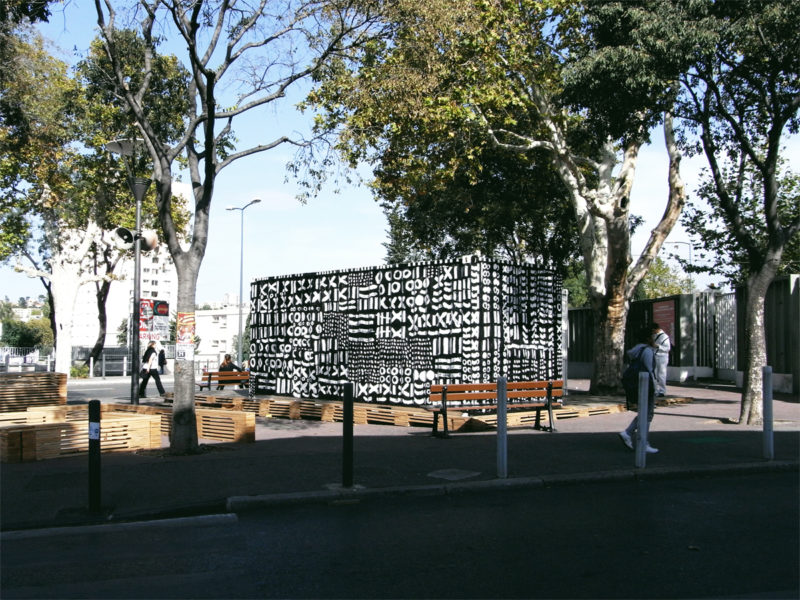
Yang’s artistic approach
Jazoo Yang uses her body to create her artwork while relying on basic tools such as brushes and knives. She also relies heavily on finger-painting and action painting, which, at times, can put her in a state of trance, helping her to connect deeply with her authentic self. Through painting, she harmonizes body and mind, the immersion providing her with energy.
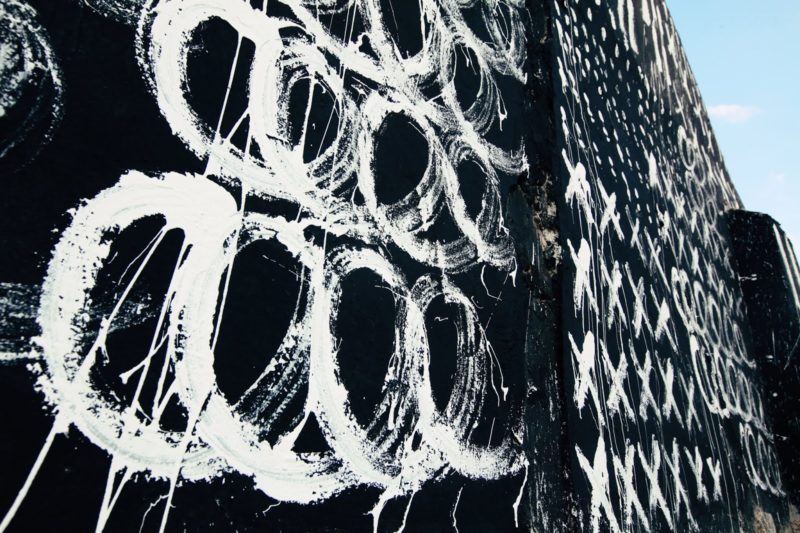
To the artist, a real painting displays the artist’s movement, as well as the intensity of emotion, ultimately releasing freedom in the process. According to Yang, her artworks are never completed. She just pours her energy on the surface and leaves it as it is.
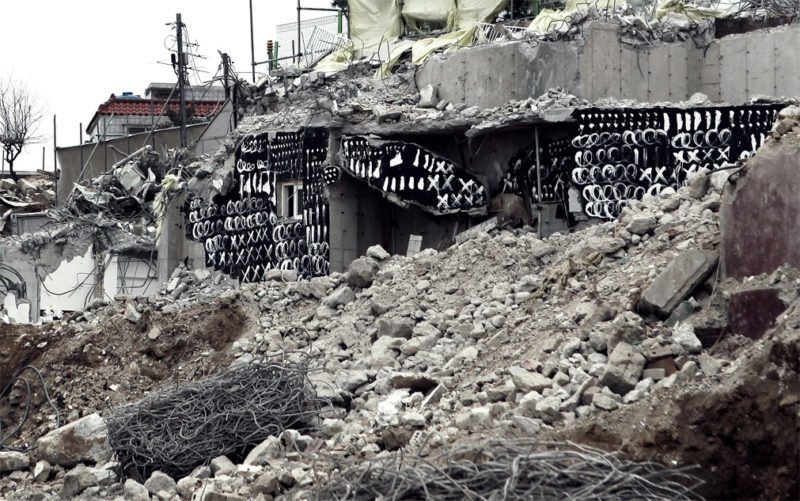
Fingerprints
Yang Jazoo uses one of the most apparently mundane things – thumbprints – to show that there are different ways of protesting. Through her series titled Fingerprints, Yang proves that fingerprints can be great symbols of protests. Essentially, what this talented Korean artist demonstrates is that art is a powerful way of speaking about issues that matter in life.
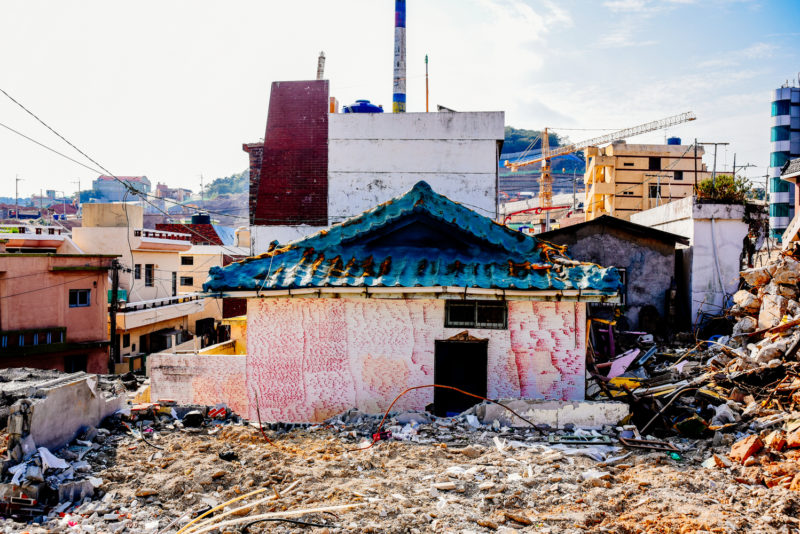
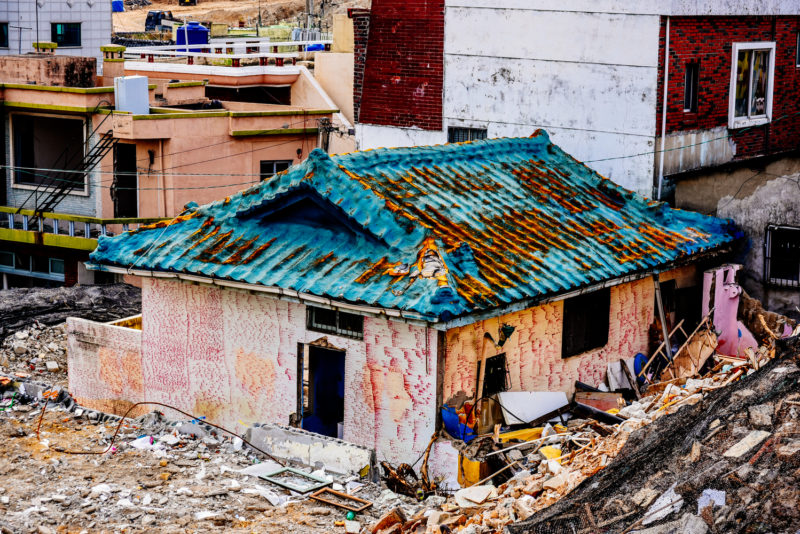
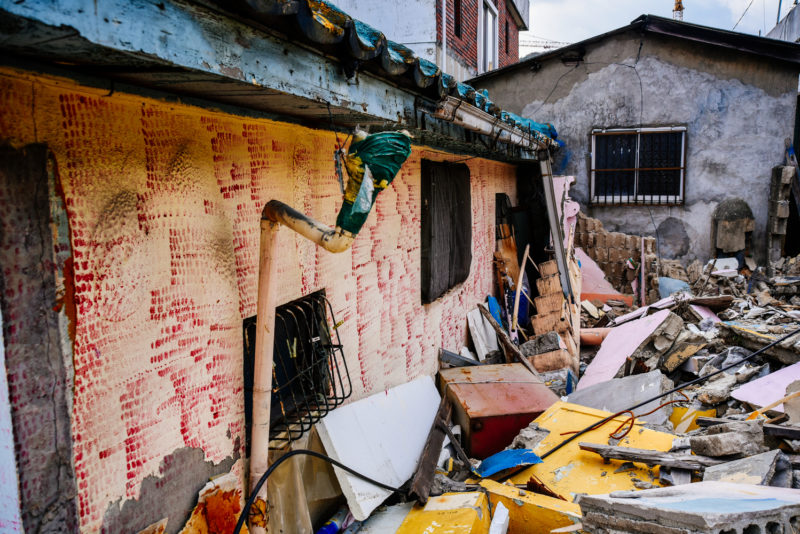
What are Fingerprints?
Fingerprints are Yang’s thumbprints on the walls of an abandoned Korean home. Through it, she wants to inform Koreans about the changes taking place within society. Some of these changes are good, while the rest aren’t. In this case, her protests center on the changing landscape of Motogol, Busan. It’s worth noting that Busan is South Korea’s second-largest city.
The focus of Yang’s protestations is the continued disappearance of ancient buildings. Their inhabitants are disappearing too. More importantly, all these changes are creating a sort-of humanitarian problem in the form of forced demolitions. Consequently, the vulnerability of the dwellings and the people who lived in them have attracted Yang’s attention, and she wants the world to know.
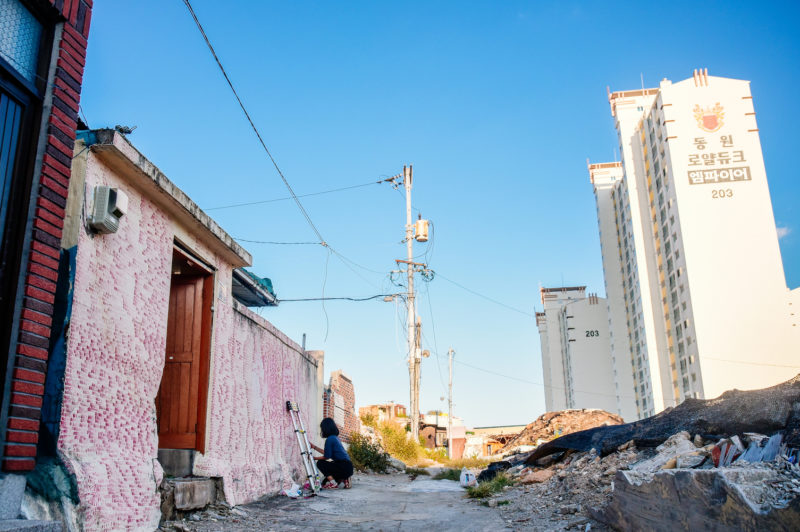
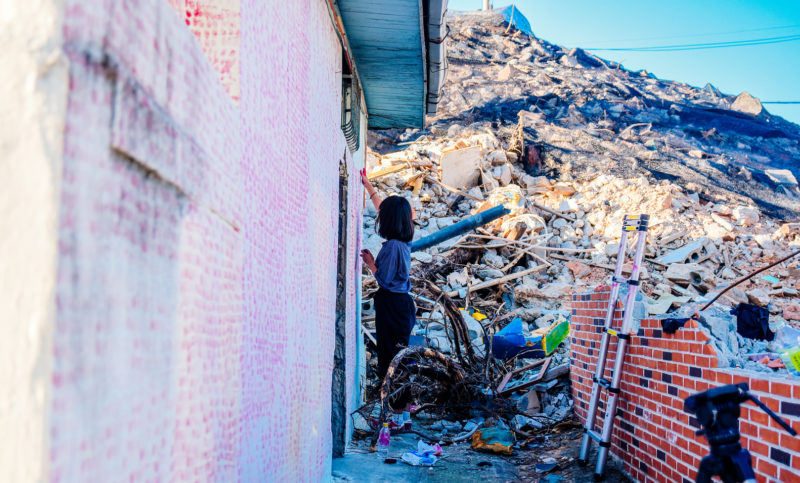
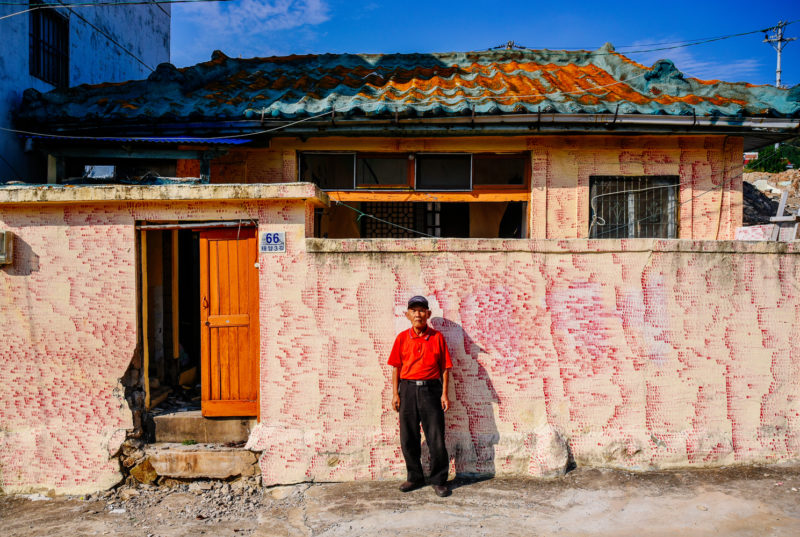
South Korea’s Protests
What Yang has done here is to show the world that there’s no shortage of ways of carrying out protests. For years, South Koreans have been demonstrating to the world that demonstrations can be compelling tools. They are renowned for their love for mass protests. Yang’s Fingerprints, however, offers a different solution. It’s about thumbprints in an abandoned house.
How long it took to create this work
The actual name of the piece of artwork through which Yang’s Fingerprints appears is Dots: Motgol 66. Through it, she covers a home that’s destined for demolition. She worked on this piece for 20 days. She worked for 4-5 hours each day and three days per week. Yang believes that all the cases of early and forced demolitions are the result of corruption and apathy.
Without corruption and apathy, all those who are forced to leave their homes would get much-deserved compensation. Sadly, they are not able to do that. Motgol 66 is the address of a house that’s earmarked for demolition. Yang hopes to use her artistic talent to highlight it and the more significant issues at play here. Without a doubt, one has to say that she has managed to do that successfully.
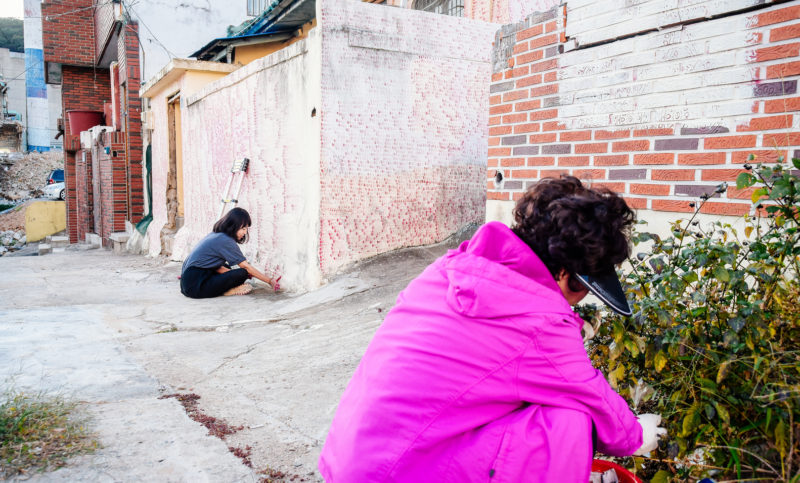
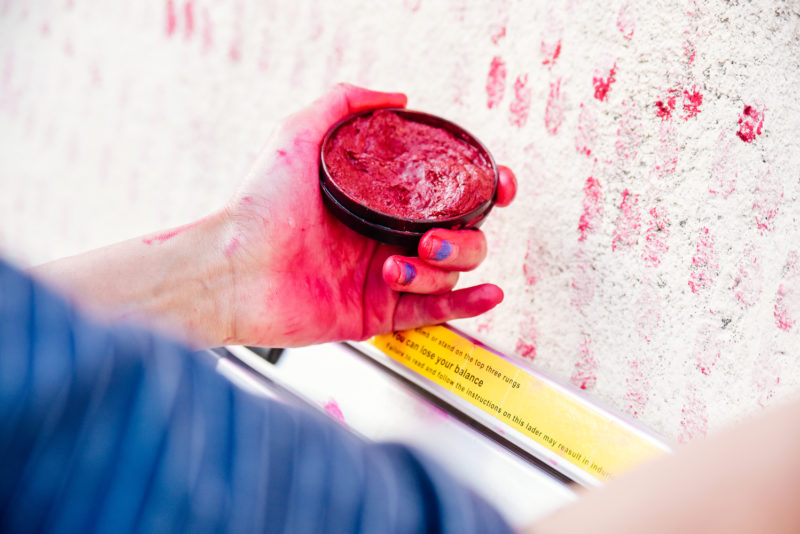
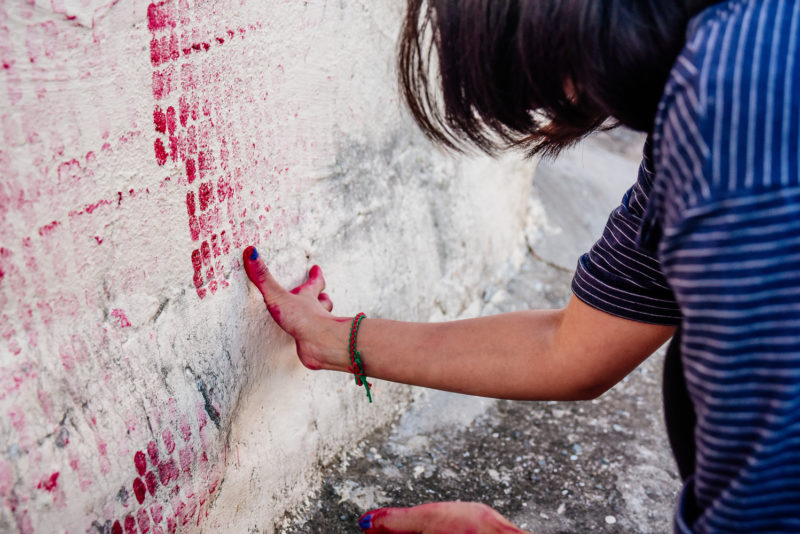
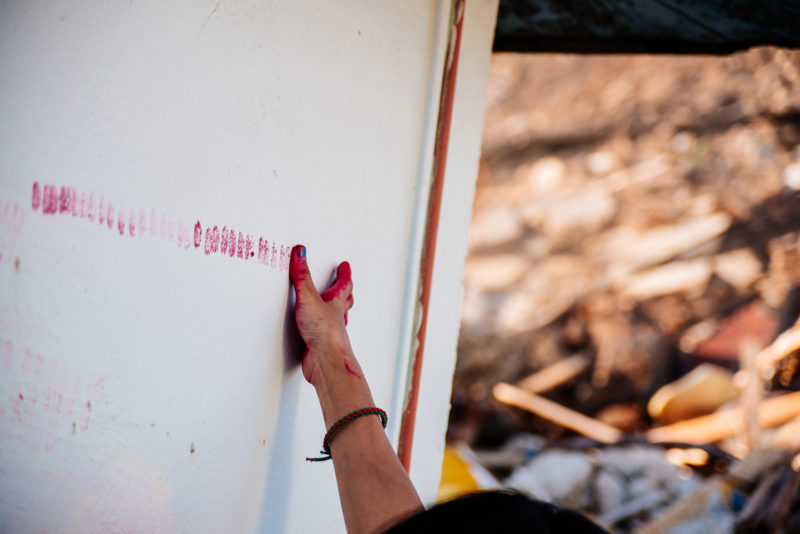
Why does this work matter?
In South Korea, fingerprints, especially thumbprints, have just as much power and recognition as signatures. For this reason, it’s easy to see why Jazoo Yang opted for this powerful, easily recognizable tool. Through it, her protestations and their focus are more comfortable to grasp. Thumbprints have a bit of permanence about them and act as a constant reminder of the government’s failings, mistakes, and corruption.
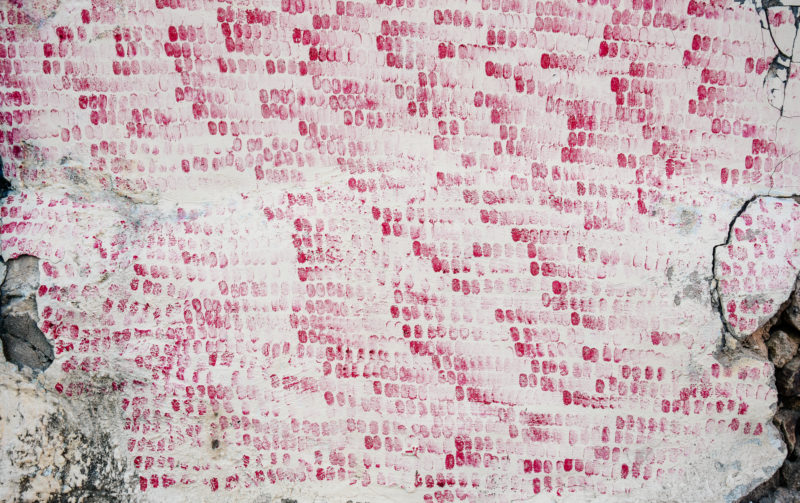
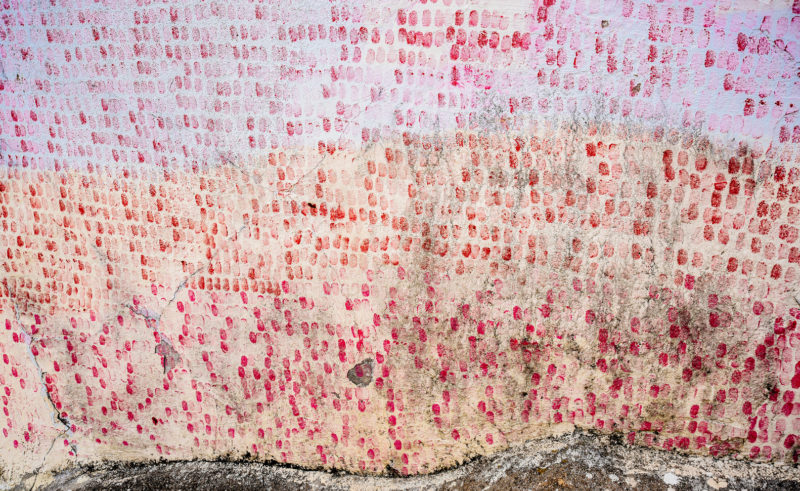
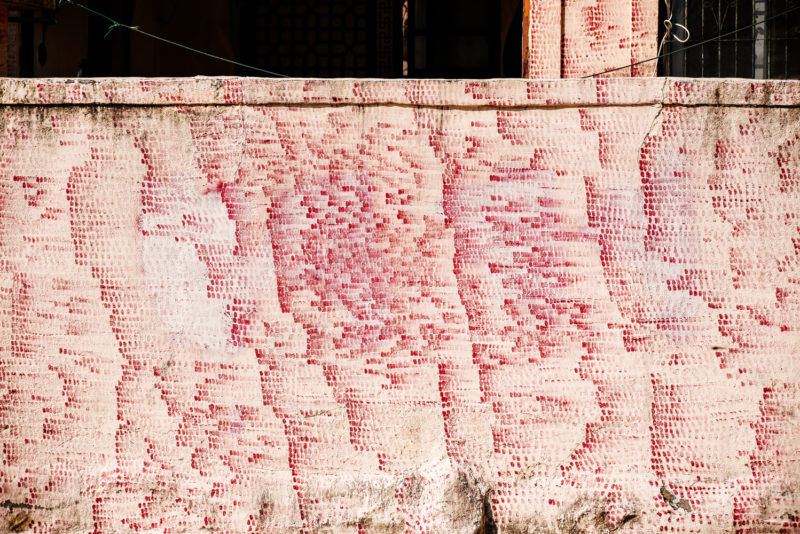
Other works
Common Alleys, 2010
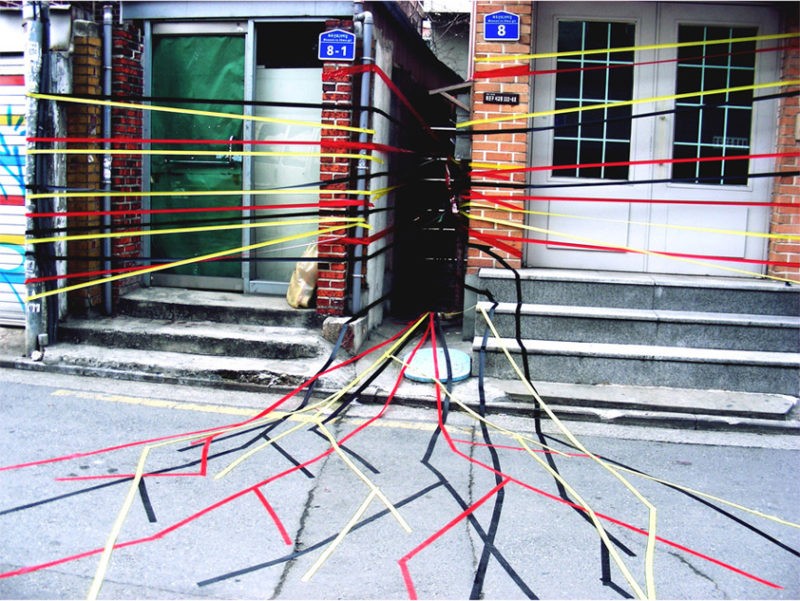
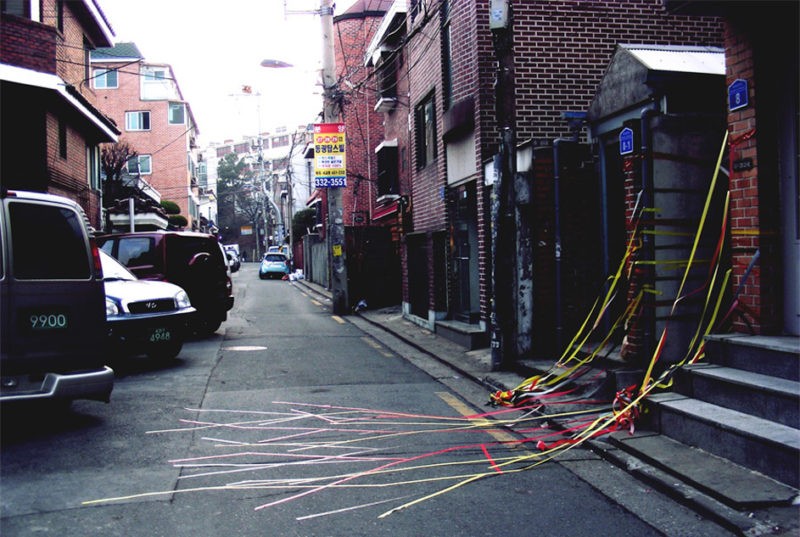
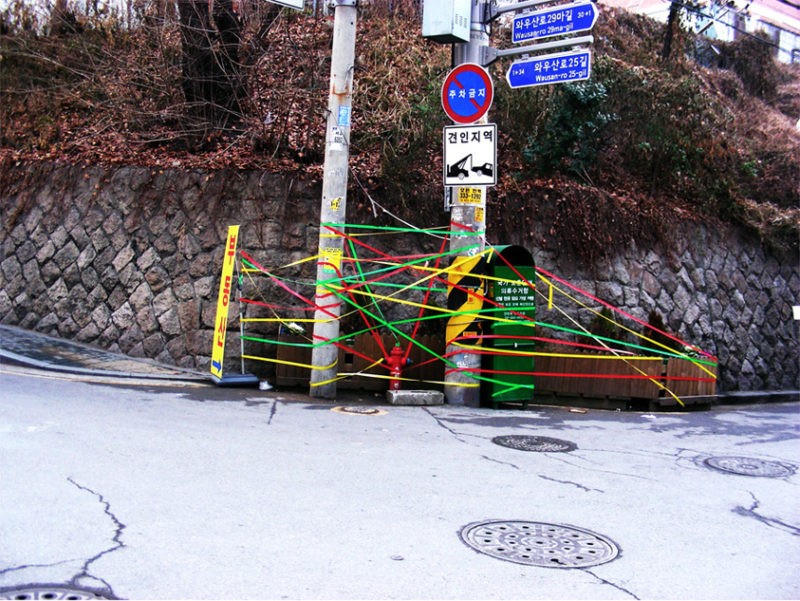
Paintings in public on Jeju Island, 2010
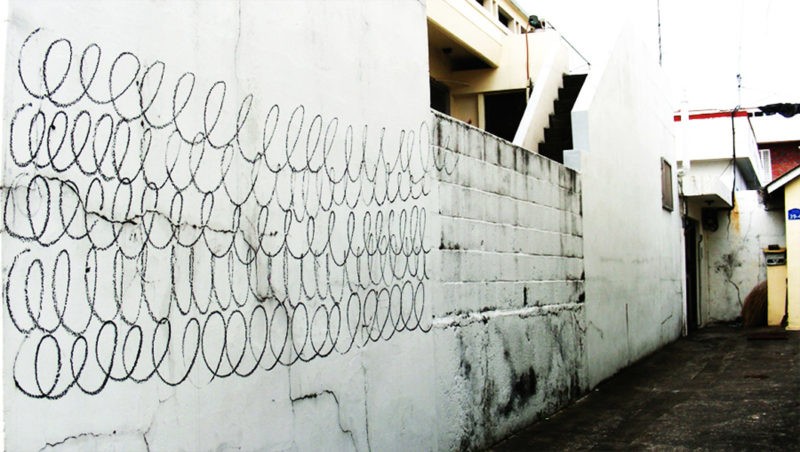
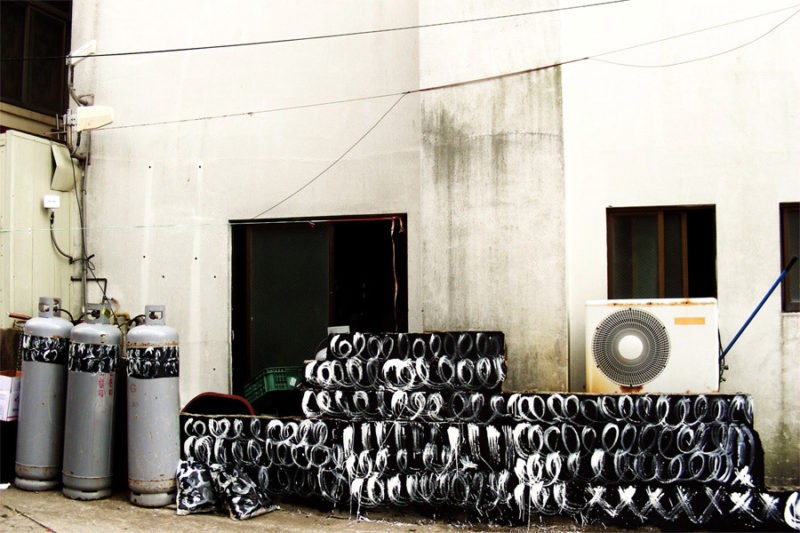
Other artworks
